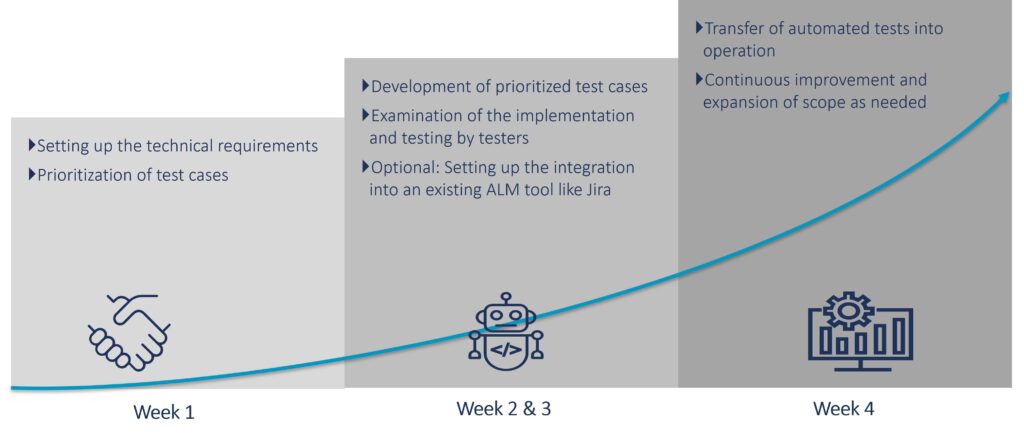
The Power of Automation in Data Migration
Automation is a practical solution to speed up and optimize the entire data migration process
Migrating to SAP S/4HANA plays a key role for companies looking to take their business processes to the next level. An often underestimated but crucial aspect of this transformation process is data migration. In this blog post, we dive deeper into the world of data migration, from the challenges faced by organizations to the advanced solutions offered by Artificial Intelligence (AI) and automation. We not only look back at best practices but also ahead to reveal the immense potential of AI and automation for the future of data migration.
The decision to move to SAP S/4HANA marks a strategic milestone for companies that lays the foundation for a modern and efficient business landscape. The S/4HANA transformation promises numerous benefits, including streamlined processes and real-time analytics. However, organizations can only realize the full potential of this transition through the careful and effective migration of data.
Data migration is the critical process of moving enterprise data to a new system, especially when migrating to modern platforms such as SAP S/4HANA. But this step is not without its challenges. Organizations face various issues during data migration, especially those caused by human factors. For example, data quality issues, time-consuming manual processes, and the risk of data loss can often be attributed to misunderstandings or mistakes on the part of employees.
This is where artificial intelligence (AI) comes into play to minimize human errors. Automated data mapping and transformation processes can be conducted precisely and efficiently with the help of AI technologies. AI-powered workflows speed up the migration process and reduce the risk of errors that could be caused by manual intervention. Intelligent data discovery and validation through AI helps identify and fix data quality issues before they impact the overall process. Top of Form
Manually performing tests during the data migration process can be time-consuming, error-prone, and inefficient. Many organizations encounter challenges during this demanding step, which has a significant impact on the success of the migration. Human testing capacity can be limited, and manual processes carry the risk of errors that can lead to data inconsistencies and quality issues.
There are solutions based on automation technologies that address the challenges of data migration and realize a smooth transition to SAP S/4HANA. In the following, we will present the Hyperautomation Platform (HAP), which is a solution based on Robotic Process Automation (RPA) technology. In RPA technology, software robots perform repetitive tasks by simulating human-like interactions with digital systems.
Additionally, the Hyperautomation Platform integrates advanced AI techniques such as computer vision to automate testing during the data migration process. The integration of AI techniques enables context-aware processing and precise execution of tests, increasing efficiency throughout the migration process.
The use of test automation offers numerous advantages that go far beyond the traditional manual testing method. Here are some of the key benefits:

The following use case will once again illustrate the advantageous use of the Camelot Hyperautomation Platform.
Background and Challenges:
Our client was faced with challenges in payroll, including time delays, quality issues, and a lack of transparency in the process. The multitude of manual steps led to processing errors and affected the efficiency of the overall process. The client was looking to standardize the process, reduce processing time, and reduce the use of humans in the process. Based on these challenges, the Hyperautomation Platform improved the process as shown in the graphic below.

The introduction of RPA technology enabled a fundamental improvement in payroll processes. With an eye on upcoming migrations, the implementation of RPA in payroll has had a positive impact on data quality. By automating validation processes, sources of error are minimized, and the accuracy of the data is improved. This is critical for a smooth migration, as high-quality data is the foundation for a successful transition to new systems, such as SAP S/4HANA. The use case thus helps to increase data quality and support the success of migration projects.
In addition, the following benefits have been achieved:
The previous chapters have taken us through the necessity and challenges of data migration, highlighting the human element as one of the critical factors for success or failure. Looking to the future, the increased use of artificial intelligence (AI) and automation opens exciting prospects for further optimizing the data migration process.
AI can play a crucial role in analysis to identify patterns and trends in data at an early stage. Automated mapping and transformation processes accelerate data transfer, while real-time monitoring and adjustments powered by AI enable agile and error-resistant migration. Intelligent quality assurance systems ensure reliable data validation and human-machine collaboration becomes the key to harmonious and effective data migration. These advanced approaches not only promise to increase efficiency, but also lay the foundation for a data-driven future of the enterprise landscape.
Find out more about S/4HANA Transformation.
We would like to thank Duy Tran for his valuable contribution to this article.

Automation is a practical solution to speed up and optimize the entire data migration process

Discover how you can streamline your financial master data management and reengineer financial processes with SAP MDG Finance.

Whilst it seems straightforward to carry out either a blood transfusion or a data migration, the actuality proves far more complex.

In this blog article, Camelot introduces you to the main principals of Demand-Driven Supply Chain Management.